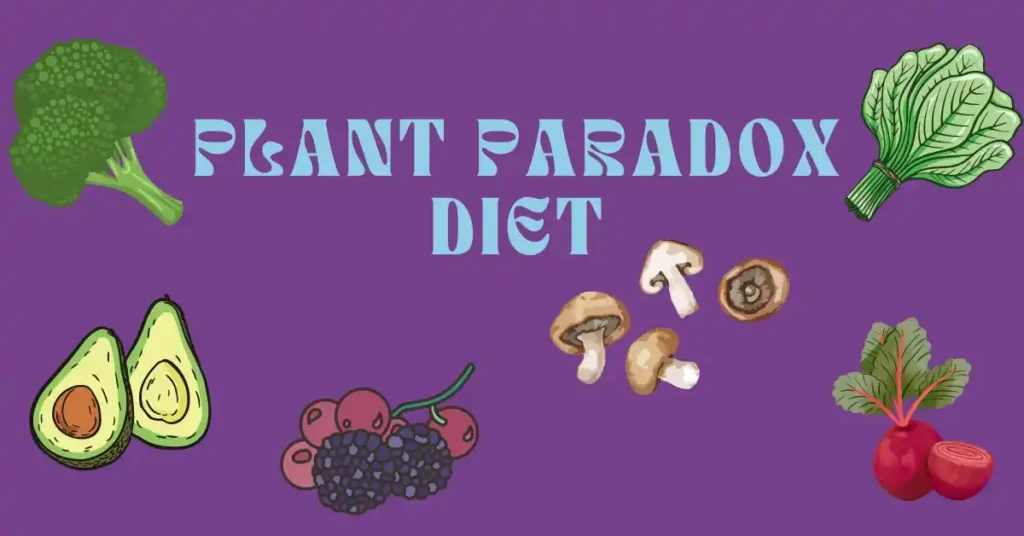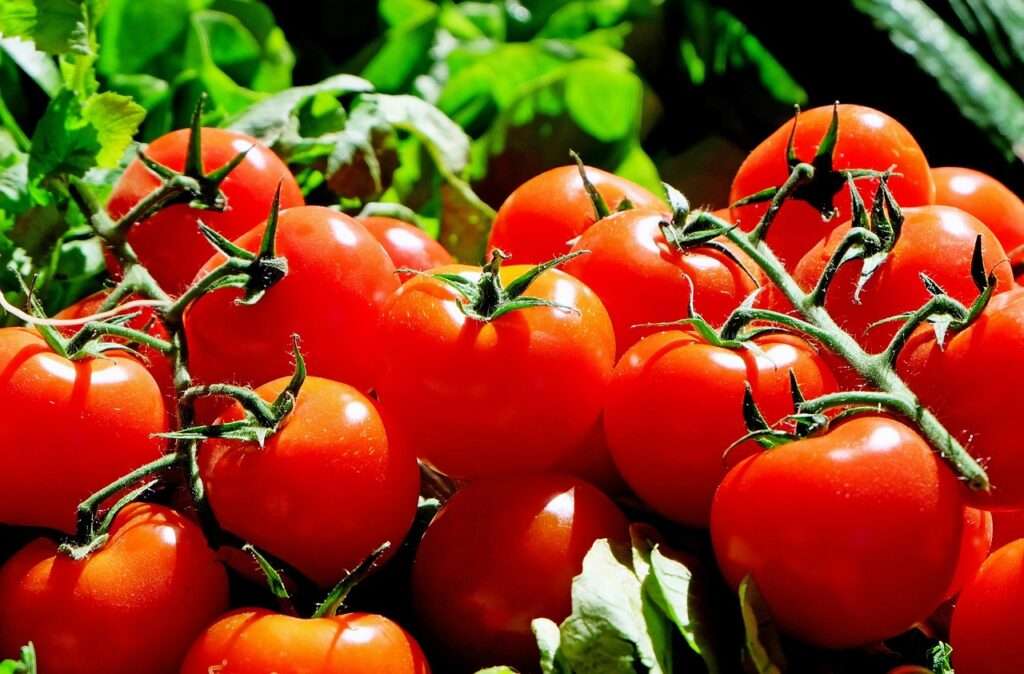Introduction
Are you fed up with those kinds of fad diets that make you feel worse than before? Well, buckle up, because we’re about to dive into the world of the Plant Paradox Diet – a nutritional approach that’s been making waves in the health community. But before we get into the nitty-gritty, let’s address the elephant in the room: what on earth is the Plant Paradox Diet, and why should you care?
What is plant paradox diet
The Plant Paradox Diet, created by Dr. Steven Gundry, is based on the idea that lectins, a type of protein found in many plant foods, can cause inflammation, weight gain, and chronic diseases. The diet recommends avoiding foods high in lectins, such as:
- Legumes: Beans, lentils, and peanuts
- Grains: Wheat, barley, and quinoa
- Nightshade vegetables: Tomatoes, eggplants, and potatoes
- Certain fruits: Especially those out of season
- Dairy products: Particularly those from cows
Instead, the diet encourages consuming nutrient-dense, whole foods like non-starchy vegetables, healthy fats, and high-quality proteins.
While some people with specific digestive issues might benefit from reducing lectins, the diet is quite restrictive and eliminates many nutritious foods.
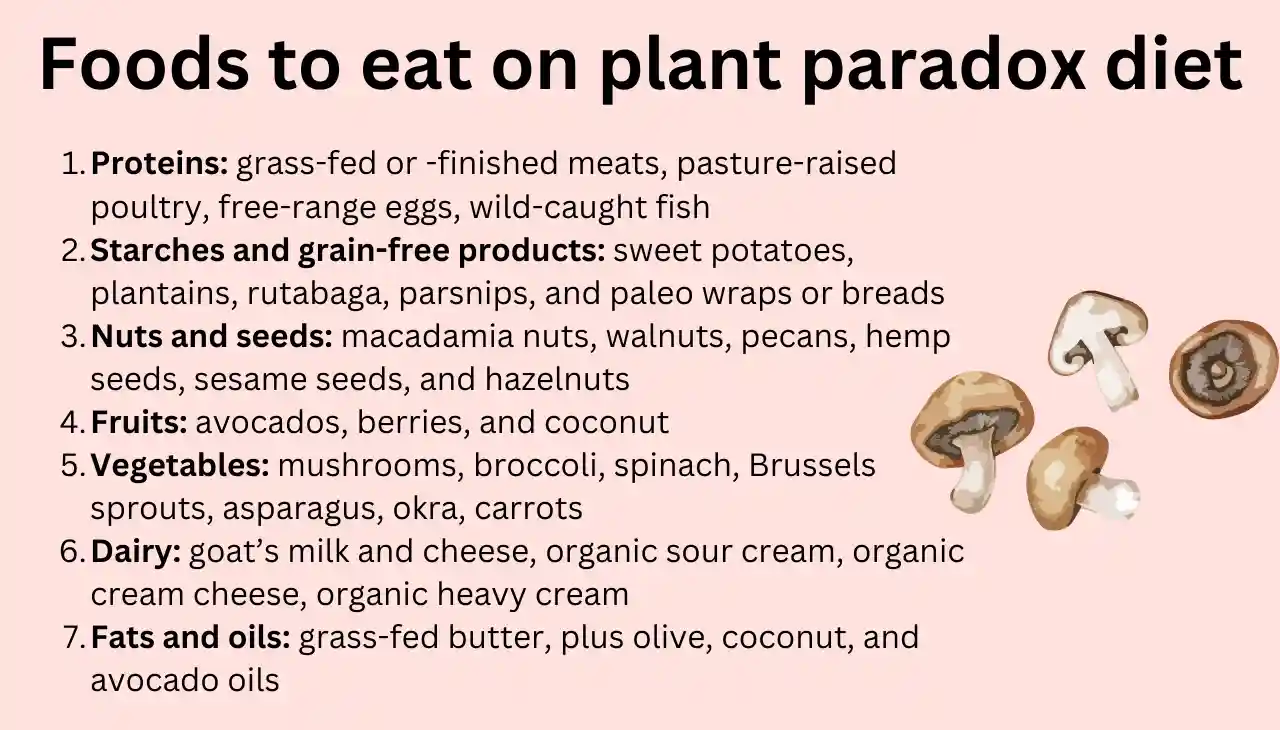
Dr Gundry diet food list (Plant Paradox Diet)
Dr. Gundry’s diet, also known as the Plant Paradox Diet, focuses on avoiding lectin-rich foods and embracing those that are low in lectins. Here’s a summary of the foods you can eat and those to avoid:
Foods to Eat
- Vegetables: Cruciferous vegetables (broccoli, cauliflower), leafy greens (spinach, kale), and non-starchy vegetables.
- Fruits: Berries (blueberries, strawberries), avocados, and in-season fruits in moderation.
- Proteins: Pasture-raised meats, wild-caught seafood, and eggs from pastured chickens.
- Dairy: A2 milk products, goat and sheep milk products, and ghee.
- Nuts and Seeds: Almonds, walnuts, and flaxseeds.
- Healthy Fats: Olive oil, Soybean oil, Avocado oil, Peanut oil, and coconut oil.
- Fermented Foods: Sauerkraut, kimchi, and yogurt (A2 or goat/sheep milk).
Foods to Avoid
- Legumes: Beans, lentils, and peanuts.
- Grains: Wheat, barley, quinoa, and corn.
- Nightshade Vegetables: Tomatoes, eggplants, potatoes, and peppers.
- Dairy: Conventional cow’s milk products.
- Certain Fruits: Especially those out of season.
- Processed Foods: Foods with added sugars and artificial ingredients.
For a more detailed list, you can refer to Dr. Gundry’s official resources.
Lectin free diet or Plant Paradox Diet
A lectin-free diet focuses on eliminating foods that contain lectins, which are proteins found in many plant-based foods. Dr. Steven Gundry popularized this diet through his book “The Plant Paradox.” Here’s a brief overview:
Foods to Avoid
- Legumes: Beans, lentils, peas, soybeans, and peanuts.
- Grains: Wheat, barley, quinoa, and corn.
- Nightshade Vegetables: Tomatoes, eggplants, potatoes, and peppers.
- Dairy: Conventional cow’s milk products.
- Certain Fruits: Especially those out of season.
Foods to Eat
- Vegetables: Cruciferous vegetables (broccoli, cauliflower), leafy greens (spinach, kale), and non-starchy vegetables.
- Fruits: Berries (blueberries, strawberries), avocados, and in-season fruits in moderation.
- Proteins: Pasture-raised meats, wild-caught seafood, and eggs from pastured chickens.
- Dairy: A2 milk products, goat and sheep milk products, and ghee.
- Nuts and Seeds: Almonds, walnuts, and flaxseeds.
- Healthy Fats: Olive oil, Soybean oil, Avocado oil, Peanut oil, and coconut oil.
- Fermented Foods: Sauerkraut, kimchi, and yogurt (A2 or goat/sheep milk).
Benefits and Risks
Benefits:
- Some people may have less inflammation and better digestion.
- Potential weight loss and improved energy levels.
Risks:
- Highly restricted, which can result in nutritional shortages.
- Eliminates many nutritious foods that are beneficial for most people.
It’s important to consult with a healthcare professional before starting any new diet, especially one as restrictive as the lectin-free diet.
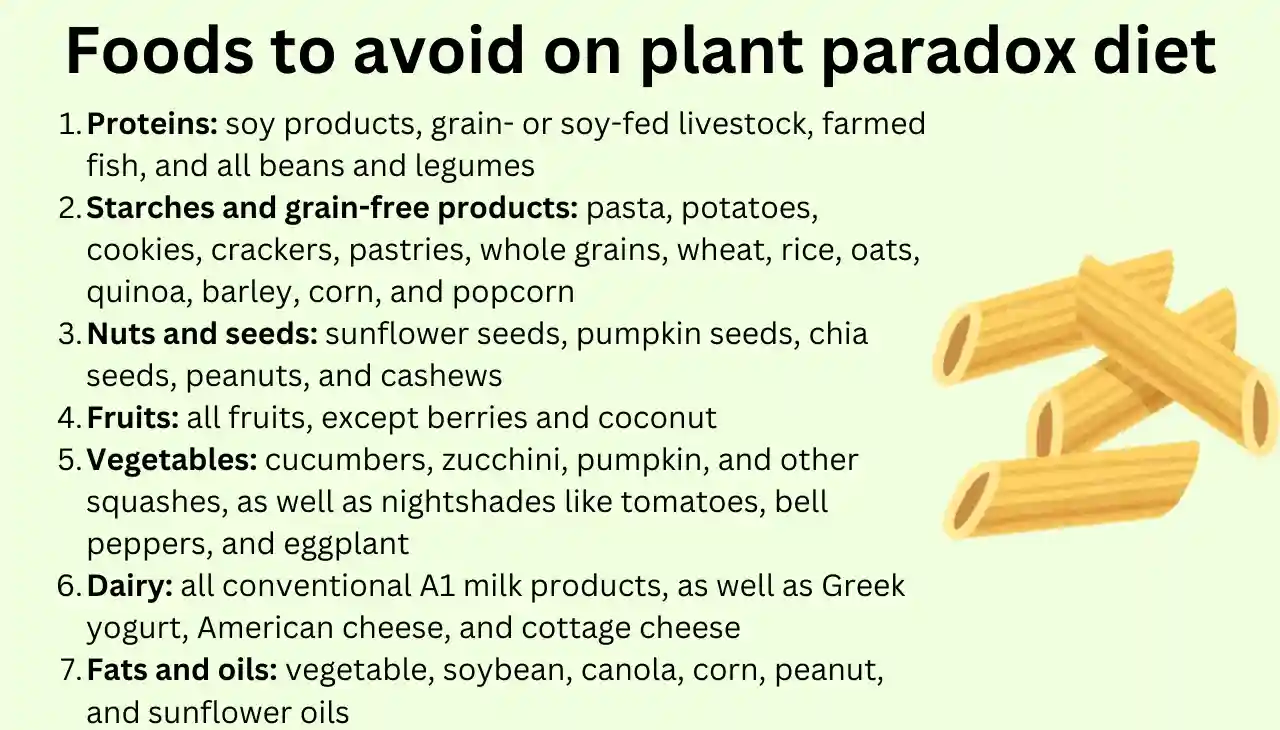
Unraveling the Mystery of the Plant Paradox Diet
Picture this: you’re trying to eat healthy, loading up on veggies and whole grains, but you’re still not feeling your best. Frustrating, right? Well, according to Dr. Steven Gundry, the mastermind behind the Plant Paradox Diet, the culprit might be hiding in plain sight – in the form of lectins.
What Are Lectins, and Why Should You Care?
Lectins are proteins found in many plants, and they’re not exactly your gut’s best friend. Think of them as little troublemakers that can wreak havoc on your digestive system and potentially lead to all sorts of health issues. The Plant Paradox Diet aims to eliminate these pesky proteins from your plate, promising better health and a happier gut.
But here’s the kicker: some of the foods you’ve always thought were healthy might actually be causing more harm than good. Intrigued? Let’s dive deeper into the world of lectins and explore the 10 foods you should avoid on the Plant Paradox Diet.
Understanding Lectins: The Good, The Bad, and The Ugly
Before we start crossing foods off your shopping list, let’s take a moment to understand why lectins are such a big deal. These proteins aren’t inherently evil – in fact, they play a crucial role in plant defense mechanisms. But when it comes to human health, they can be a bit of a double-edged sword.
“The Dark Side of Lectins”
- Lectins disrupt gut flora, trigger inflammation, interfere with nutrient absorption, and potentially contribute to autoimmune diseases.
- Not all lectins are created equal and not everyone is equally sensitive to them.
“The Gut-Health Connection”
- The gut is a control center for overall health, boosting the immune system, mood, and weight.
- Lectins can disrupt this delicate ecosystem.
Plant Paradox Diet Principles
- Explores foods to eliminate from the diet.
Plant paradox foods to avoid
The Plant Paradox Diet, created by Dr. Steven Gundry, emphasizes avoiding foods that contain lectins. Check out the following list of foods to steer clear of:
Foods to Avoid
- Legumes: Beans, lentils, peas, soybeans, and peanuts.
- Grains: Wheat, barley, quinoa, rice, and corn.
- Nightshade Vegetables: Tomatoes, eggplants, potatoes, and peppers.
- Dairy: Conventional cow’s milk products.
- Certain Fruits: Especially those high in sugar like bananas, grapes, and mangoes.
- Processed and Packaged Foods: Foods with added sugars and artificial ingredients.
Foods to Eat
- Vegetables: Cruciferous vegetables (broccoli, cauliflower), leafy greens (spinach, kale), and non-starchy vegetables.
- Fruits: Berries (blueberries, strawberries), avocados, and in-season fruits in moderation.
- Proteins: Pasture-raised meats, wild-caught seafood, and eggs from pastured chickens.
- Dairy: A2 milk products, goat and sheep milk products, and ghee.
- Nuts and Seeds: Almonds, walnuts, and flaxseeds.
- Healthy Fats: Olive oil, Soybean oil, Avocado oil, Peanut oil, and coconut oil.
- Fermented Foods: Sauerkraut, kimchi, and yogurt (A2 or goat/sheep milk).
This diet aims to reduce inflammation and improve gut health by eliminating lectins, but it can be quite restrictive.

The Plant Paradox Diet: A New Approach to Eating
At its heart, the Plant Paradox Diet is all about nourishing your body with whole, unprocessed foods that are low in lectins. It’s not just about cutting out certain foods – it’s about embracing a new way of eating that could potentially transform your health.
The Promise of the Plant Paradox
Followers of this diet often report:
- Improved digestion
- Reduced inflammation
- Weight loss
- Increased energy levels
- Better mental clarity
Sounds pretty good, right? But as with any diet, the key is in the details. Let’s take a closer look at the foods you’ll need to avoid to reap these potential benefits.
Bringing It All Together: Your Plant Paradox Meal Plan
Now that we’ve covered what to avoid, you might be wondering, “What’s left to eat?” Don’t worry – there are still plenty of delicious options! Here’s a sample day on the Plant Paradox Diet:
- Breakfast: Scrambled pasture-raised eggs with sautéed spinach and avocado
- Lunch: Grilled chicken salad with mixed greens, olive oil dressing, and a side of resistant starch (like cooled sweet potato)
- Dinner: Wild-caught salmon with roasted Brussels sprouts and cauliflower rice
- Snacks: Macadamia nuts, celery with almond butter, or a small handful of berries
Remember, the key is to focus on whole, unprocessed foods that are naturally low in lectins. With a little creativity, you can enjoy a wide variety of delicious meals while sticking to the Plant Paradox principles.
Beyond Weight Loss: The Potential Benefits of Going Lectin-Free
While many people turn to the Plant Paradox Diet for weight loss, its potential benefits go far beyond shedding a few pounds. Some reported benefits include:
- Reduced inflammation throughout the body
- Improved digestion and gut health
- Better energy levels and mental clarity
- Potential reduction in symptoms of autoimmune diseases
- Improved heart health markers
Of course, everyone’s experience is different, and it’s important to consult with a healthcare professional before making significant changes to your diet.
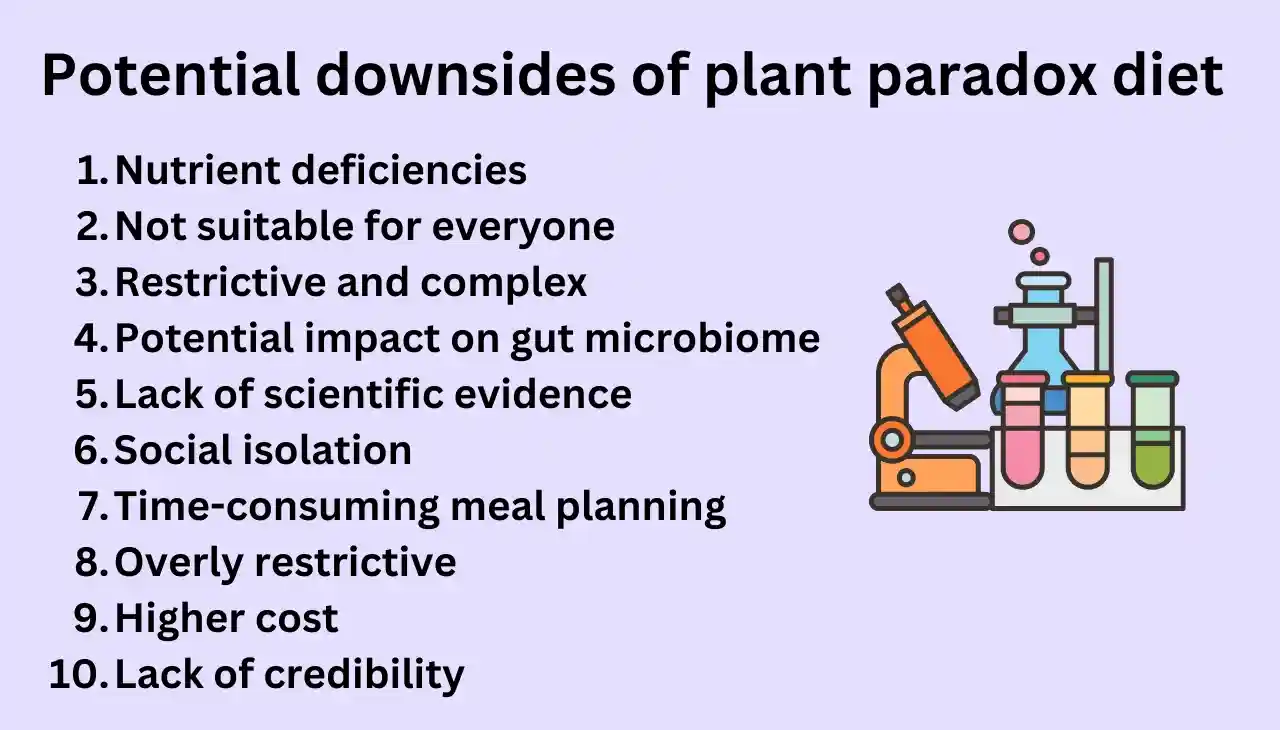
Is the Plant Paradox Diet Right for You?
As with any dietary approach, the Plant Paradox Diet isn’t a one-size-fits-all solution. It might be especially useful for people suffering with:
- Chronic inflammation
- Autoimmune conditions
- Digestive issues
- Unexplained weight gain or difficulty losing weight
However, it’s a restrictive diet that may be challenging to follow long-term for some people. It’s always a good idea to start slowly, perhaps by eliminating one or two lectin-rich foods at a time, and see how your body responds.
Side effects of plant paradox diet
The Plant Paradox Diet, while beneficial for some, can have potential side effects and drawbacks.
Potential Side Effects
- Nutrient Deficiencies: The diet is highly restrictive and eliminates many nutrient-dense foods, which can lead to deficiencies in essential vitamins and minerals if not carefully managed.
- Digestive Issues: Some people may experience digestive problems due to the lack of fiber from excluded foods like legumes and whole grains.
- Increased Fat and Calorie Intake: The diet encourages the consumption of high-fat foods, which can lead to an overconsumption of calories and potentially weight gain if not monitored.
- Heart Health Concerns: Avoiding certain vegetables and whole grains might increase the risk of heart problems due to a lack of beneficial nutrients like fiber and antioxidants.
- Mental Health Effects: The restrictive nature of the diet can lead to feelings of deprivation and may negatively impact mental health, potentially causing stress or depression.
Benefits
Despite these potential side effects, some people report benefits such as reduced inflammation, improved digestion, and weight loss. However, it’s important to approach this diet with caution and ideally under the guidance of a healthcare professional.
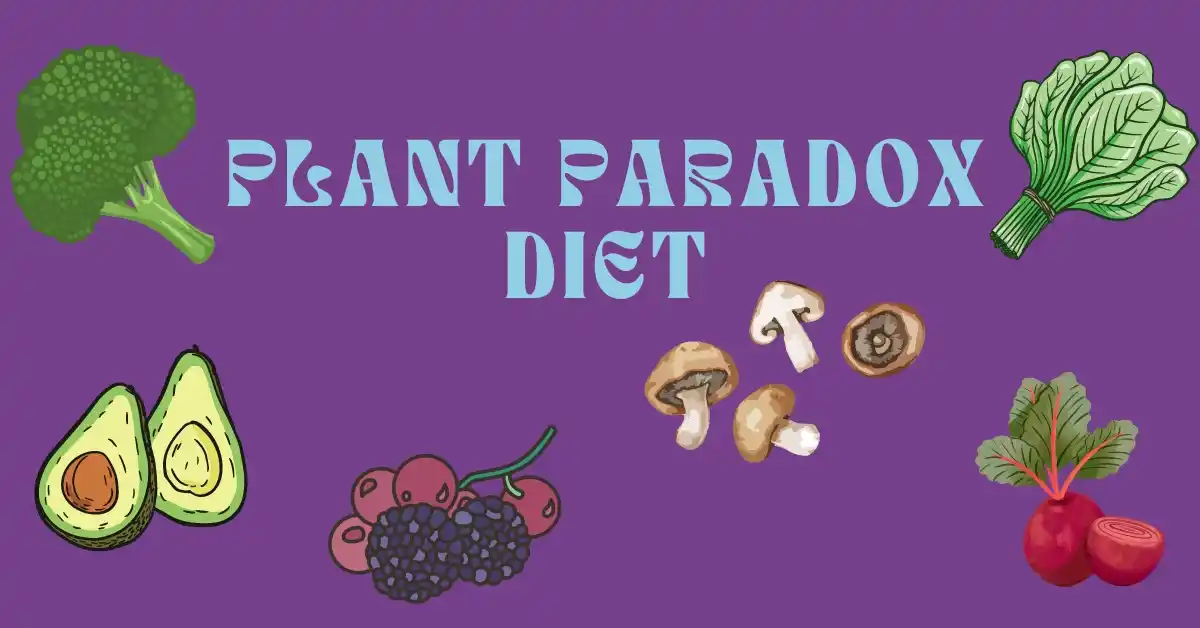
Conclusion
The Plant Paradox Diet offers a unique perspective on nutrition, challenging long-held beliefs about “healthy” foods. It focuses on low-lectin, whole foods, aiming to reduce inflammation, improve gut health, and promote overall well-being. To make a successful dietary change, start by incorporating its principles into your current eating habits, such as swapping high-lectin foods for lower-lectin alternatives.
The goal is to find an eating pattern that makes you feel your best physically and mentally. Whether you fully embrace the Plant Paradox Diet or use it as inspiration for a lectin-conscious approach, the most important thing is to listen to your body and make choices that support your health and wellbeing.
FAQ
Is the Plant Paradox Diet safe for everyone?
While the Plant Paradox Diet can be beneficial for many people, it's not necessarily suitable for everyone. As with any significant dietary change, it's important to consult with a healthcare professional before starting, especially if you have existing health conditions or are taking medications. Before starting this program, it's important for pregnant individuals, children, and those with a history of eating disorders to take extra care and seek advice from a medical professional.
How long does it take to see results on the Plant Paradox Diet?
The time frame for noticing effects varies widely from person to person. Some individuals report feeling better within a few days of starting the diet, experiencing reduced bloating, increased energy, and improved digestion. Others may take many weeks to detect a noticeable shift. Weight loss, if that's a goal, typically occurs gradually over several weeks or months. Remember, sustainable changes often take time, so patience is key!
Can I ever eat lectins again once I start the Plant Paradox Diet?
The Plant Paradox Diet isn't necessarily about eliminating lectins forever. After following the diet strictly for a period (usually several weeks to months), some people find they can reintroduce certain lectin-containing foods in moderation without experiencing negative effects. Dr. Gundry suggests a phased approach to reintroduction, starting with small amounts of properly prepared (e.g., pressure-cooked) lectin-containing foods and monitoring your body's response. However, everyone's tolerance is different, so it's important to listen to your body and reintroduce foods slowly and carefully.
Is the Plant Paradox Diet expensive to follow?
The cost of following the Plant Paradox Diet can vary depending on your food choices and where you live. Some aspects of the diet, like focusing on pasture-raised meats and wild-caught fish, can be more expensive than conventional options. However, by emphasizing whole foods and reducing processed food consumption, you might find that you're spending less on snacks and convenience foods. To keep costs down, consider buying in-season produce, shopping at local farmers' markets, and batch cooking meals at home. Remember, investing in your health now could potentially save on healthcare costs in the long run.
Can I follow the Plant Paradox Diet if I'm vegetarian or vegan?
While the Plant Paradox Diet does emphasize animal proteins like pasture-raised meats and wild-caught fish, it is possible to follow a modified version as a vegetarian or vegan. However, it can be more challenging due to the restrictions on many plant-based protein sources like beans and legumes. Vegetarians and vegans following this diet would need to focus on nuts (especially macadamia nuts), seeds, and certain plant-based proteins like hemp seeds or pea protein isolate. A2 dairy products could also be included for lacto-vegetarians. It's crucial to ensure you're getting adequate protein and other essential nutrients, so working with a registered dietitian familiar with the Plant Paradox principles can be helpful in creating a balanced, lectin-light plant-based meal plan.
